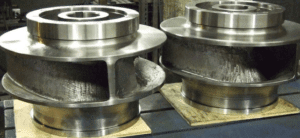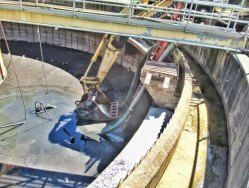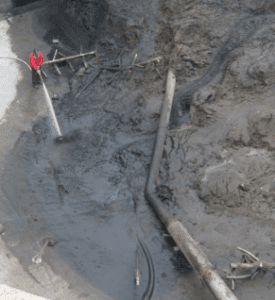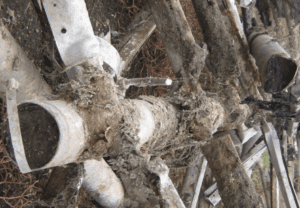How to Mitigate Grit In Wastewater Treatment Plants
In Part 1 of this blog series, we defined grit as organic/inorganic substance that infiltrates wastewater treatment plants with the incoming influent. Grit is heavier than water and settles in chambers and pipes in the plant, causing unwanted and expensive abrasion.
In Part 2, we covered options for removing grit from treatment plants. Plant operators have many different options, such as aerated chambers and vortex systems. The final decision of which type of removal system is best depends on which one fits the most needs.
In this third, and final, piece about grit, we cover grit mitigation, or what to do when grit removal isn’t an option and your plant must continue to operate with grit status quo.
When grit removal isn’t an option due to the cost or space requirement of installing a system, wastewater plant operators can mitigate the grit. The ways in which grit can be mitigated include hardening of exposed equipment, frequent basin cleaning, aeration, and predator control for trickling filter/fixed film treatment. Plant operators may implement one, or a combination, of these mitigation techniques.
1: Mitigating Grit Effects on Equipment
Grit abrasiveness will “eat up” standard pumps, impellers and clarifying scrapers, so plant operators invest in hardened parts that can withstand the corrosive effects of grit. The Brinell scale characterizes the indentation hardness of materials through the scale of penetration of an indenter, loaded on a material test-piece. It is one of several definitions of hardness in materials science. Standard Cast Iron Pump Impellers have a Brinnell hardness of approximately 200 HB. Softwood has a Brinell hardness number (HB) of 1.6 HB, Copper is 35 HB, Annealed Stainless Steel is 200 to 600 HB and Hardox Wear Plate is 400-700 HB. [source: Wikipedia] To count on hardening as a means of extending equipment lifetime, the material for the wastewater plant parts should have a Brinell strength of 400 HB or greater.
The costs associated with equipment hardening depend on two factors: how many times parts are replaced per year and whether or not the plant requires downtime. If the plant requires downtime, plant operators will either rent, or purchase, backup equipment to keep production going.
2: Mitigation Grit Effects on Basins
Another option for grit removal is frequent basin cleaning. If grit is a problem for your wastewater plant and you’ve already hardened your equipment, the next step in grit mitigation is to schedule planned downtime for basins. While the basins are offline, they can be cleaned manually by liquidization or vacuum trucks, or a combination of both. The periodic removal of accumulated grit prevents further wear in the immediate future and the hassle of removing multiple feet of grit in the years to come.
How often plant basins are cleaned depends on the plant, the volume of influent it processes, the grit characteristics and the plant operators budget. Regular basin cleaning might mean one time per year, or one time every other year, and the cost may range from $50/cubic-foot to $200/cubic-foot.
3: Mitigating Grit Effects on Aeration Systems
Aeration systems that are properly operating will keep grit particles in suspension allowing for downstream treatment and removal. This process requires the use of bubble diffusers, which produce either coarse or fine bubbles from the floor of a plant tank. The coarse bubbles are 1/4-1/2 inch in size and are generally better at vertically moving water than at mass transfer of oxygen. If mass transfer of oxygen is the aeration goal, then a fine bubble diffuser would be better suited for the job, as it would provide twice the mass transfer of oxygen as a coarse bubble diffuser, given the same air volume.
Aeration tanks run into trouble when encumbered by mass accumulation of grit. If there is a power failure and air ceases to be pumped into the tank, grit will back up in a coarse bubble diffuser head and settle. Then, when the power is regained, the system will blow hot air, thus solidifying the grit inside the diffuser head and causing blockage.
Fine bubble systems include a rubber membrane, through which the air passes to create bubbles. The slits in the membrane are microscopic enough to prevent grit from infiltrating the diffuser head, thus acting like a check-valve. The rubber membranes do eventually degrade and need replacement, or they occasionally pop out of place and get lost in the tank.
4: Mitigating Grit Effects in Trickling Filter/Fixed Film Treatment
Trickling filter, or fixed-film treatments, involve an organic substance – like a rock – being placed in a wastewater channel to act as an influent filter. The organic substance grows a bio-film that acts as a filter for grit and other substances. However, the effectiveness of these fixed-film filters is reduced when they attract predators, such as snails, worms or filterflies. If sludge accumulates at the fixed-film filter, snails will attach themselves to the bio-film. When the snails die, their shells end up adding another type of grit to the system.
Fixed-film predators can be removed by taking basins out of production and flooding them, with or without chemical additives, to kill the snails and other predators. However, harsh chemicals may have adverse effects on equipment downstream, so plant operators should consider the cost of the treatment repercussions versus the nuisance of the predators.
Conclusion
Wastewater grit is a problem for plant operators and, if not treated, has the potential to destroy equipment and reduce production capacity. Removing grit from the system isn’t always feasible, but plant operators can continue operation by mitigating it with hardened equipment, frequent basin cleaning, aeration and control of fixed-film predators. In Part 1 of this series, we gave an overview of grit and its characteristics – sources, size, coarseness – and how it affects wastewater plants. In Part 2, we discussed grit removal system options and the different factors that should be considered when choosing a solution.
If your wastewater plant is plagued with grit, give us a call to talk about how to fix it. We’re knowledgeable on all of the different aspects of grit, and removal or mitigation solutions, and would be happy to help you figure out how to keep your plant at optimal operating capacity.




